
Normal Foot X Ray Normal foot series Image Check you have the right
1. Check you have the right views. There are two views in foot x-rays DP (dorsal-plantar) and oblique. Both should ideally be done when weight-bearing if your patient can manage it. 2. Review the bones. Work round the bones one by one (including the metatarsals). Start proximally and work your way down, going medial lateral.

Normal Left Ankle Xray
Fig. 5A —Children with medial foot pain, one with history of cerebral palsy. Weightbearing anteroposterior view of left foot in 9-year-old boy with medial foot pain shows hindfoot and forefoot alignment abnormalities. Mid talar line passes far medial to base of first metatarsal, and there is lateral subluxation of navicular on talus.
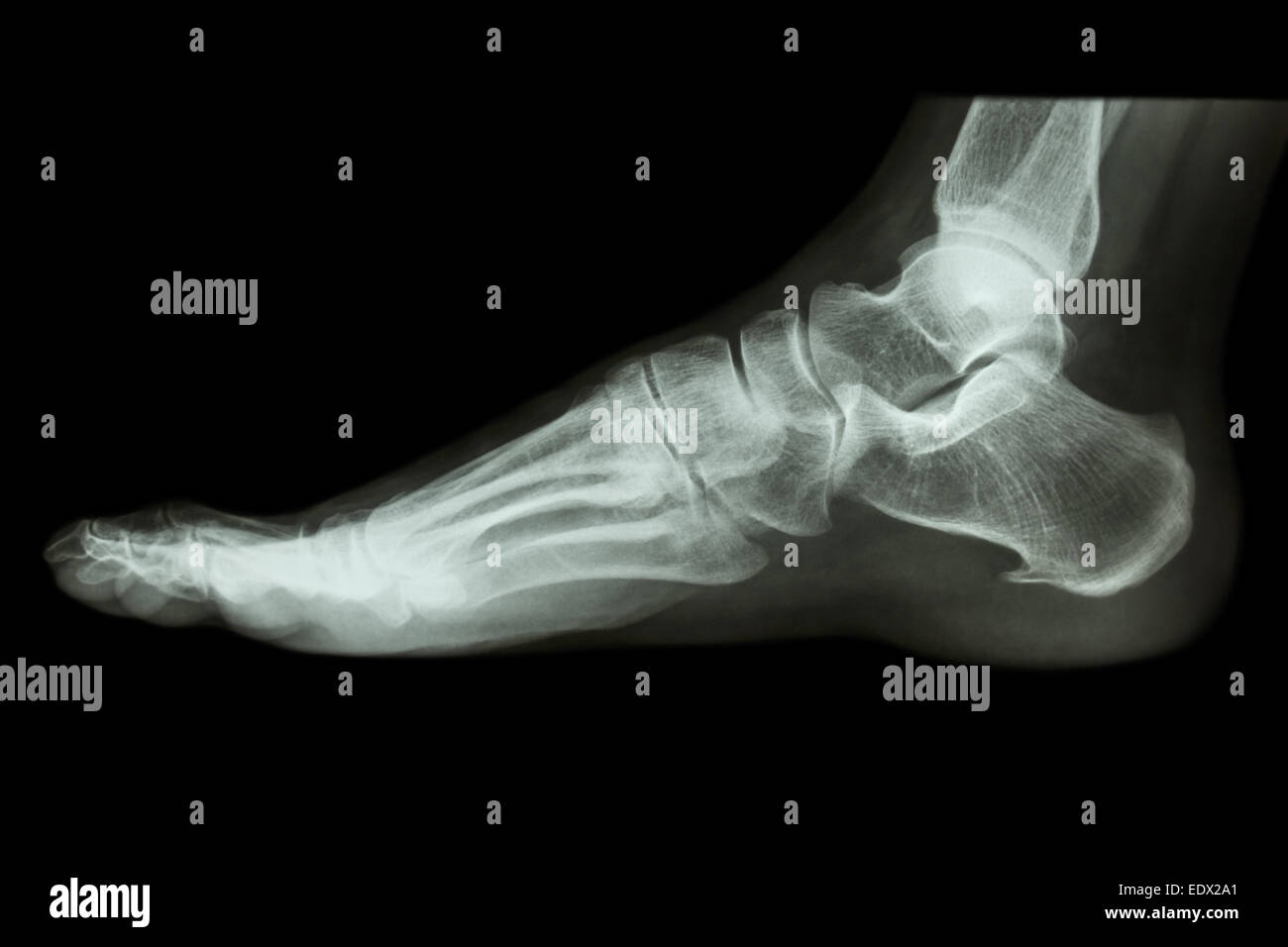
Xray normal human's foot lateral Stock Photo Alamy
Technical factors AP projection centering point x-ray beam centered to the base of the 3 rd metatarsal the beam must be angled approximately 10° posteriorly towards the calcaneum to mimic the arch of the foot, this may change if the arch is high or flat collimation lateral to the skin margins anterior to the skin margins of the distal phalanges
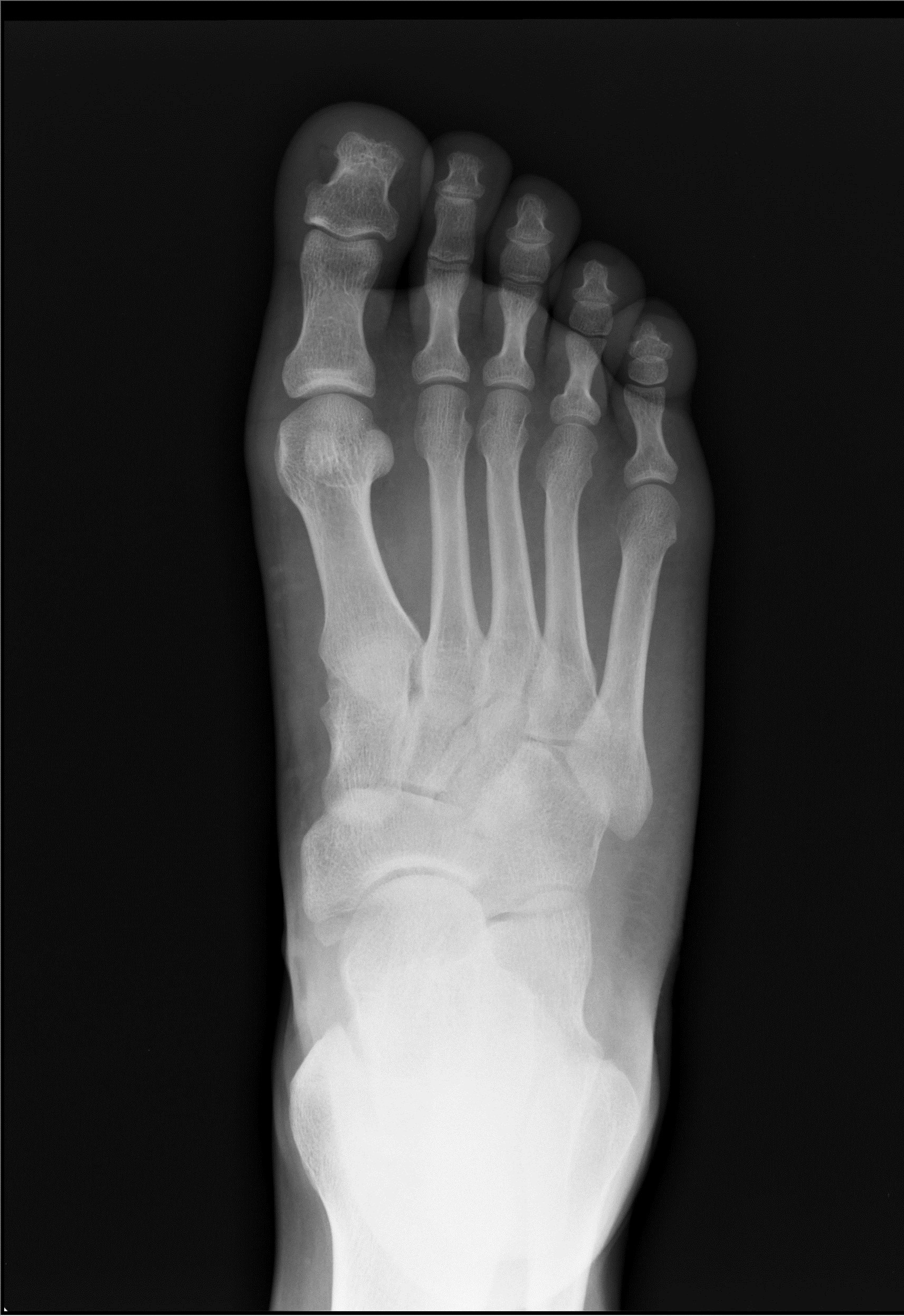
Podiatrist in Akron Hallux Rigidus in Akron Green Foot & Ankle Care, LLC
Diagnostics & Testing / Foot X-Ray Foot X-Ray A foot X-ray is a test that produces an image of the anatomy of your foot. Your healthcare provider may use foot X-rays to diagnose and treat health conditions in your foot or feet. Foot X-rays are quick, easy and painless procedures.
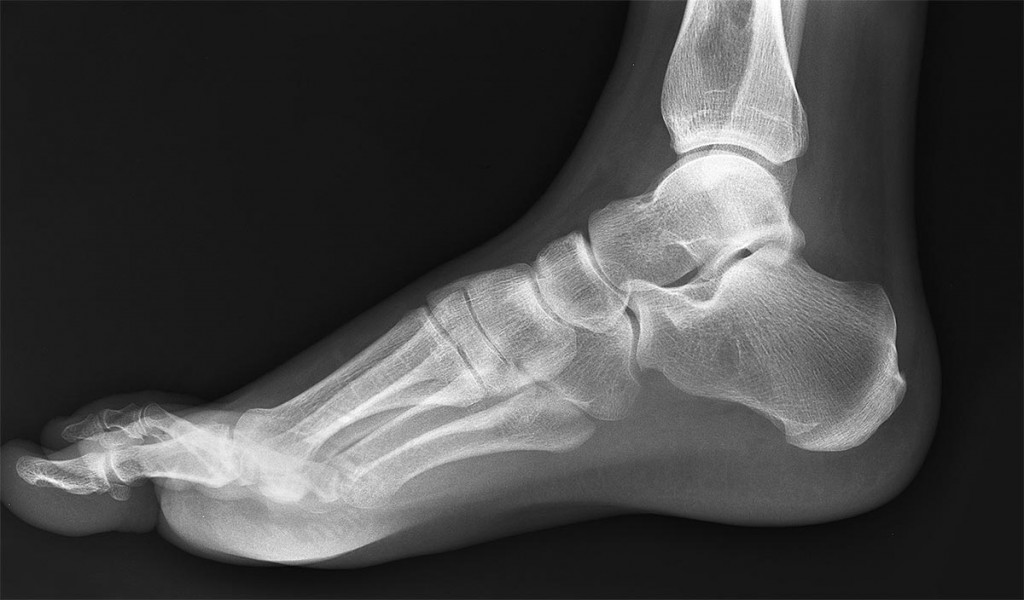
footxray RCEMLearning
A foot x-ray, also known as foot series or foot radiograph, is a set of two x-rays of the foot. It is performed to look for evidence of injury (or pathology) affecting the foot, often after trauma. Reference article This is a summary article. For more information, you can read a more in-depth reference article: foot series. Summary indications
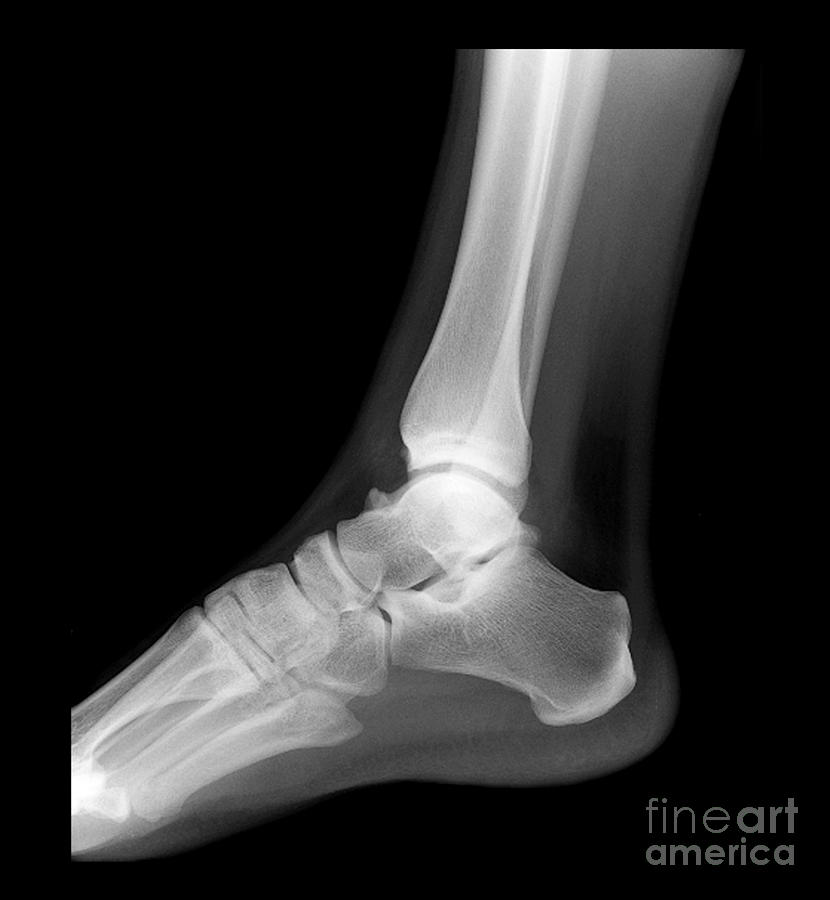
Ankle Xray, Normal Photograph by Living Art Enterprises
Tutorials Next » Trauma X-ray - Lower limb Foot Key points Carefully check the cortical edge of all bones on all views available Always check for alignment of bones at the mid-forefoot junction (tarsometatarsal joints) Injury to the Lisfranc ligament may not be visible on initial X-ray - follow up may be necessary
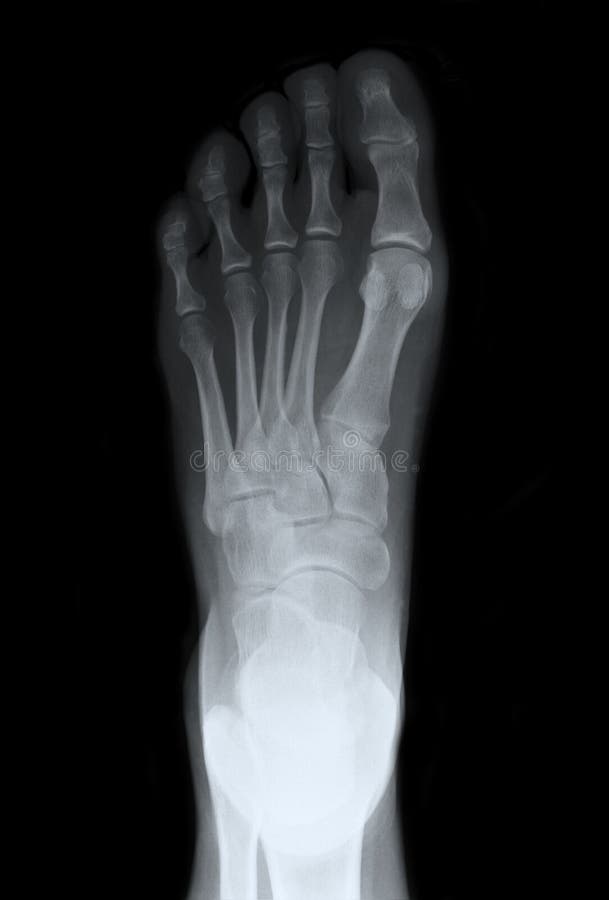
Left Foot Top Xray stock photo. Image of office, bones 23546186
Conventional radiography is the standard initial diagnostic imaging modality to assess the foot and ankle. 2 A number of factors allow radiography to serve as an excellent survey modality in the musculoskeletal system.
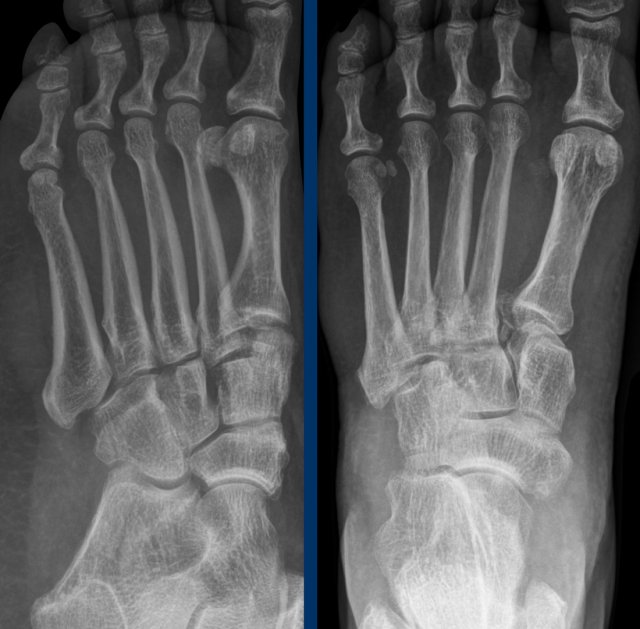
Normal Left Ankle Xray
If viewed from the front or exposure side, the side from which the X-ray beam originally entered the body, it will appear to be a left foot. But if the same image is looked upon from the back-the opposite surface or nonexposure side, the viewer sees the mirror image, which appears to be a right foot.
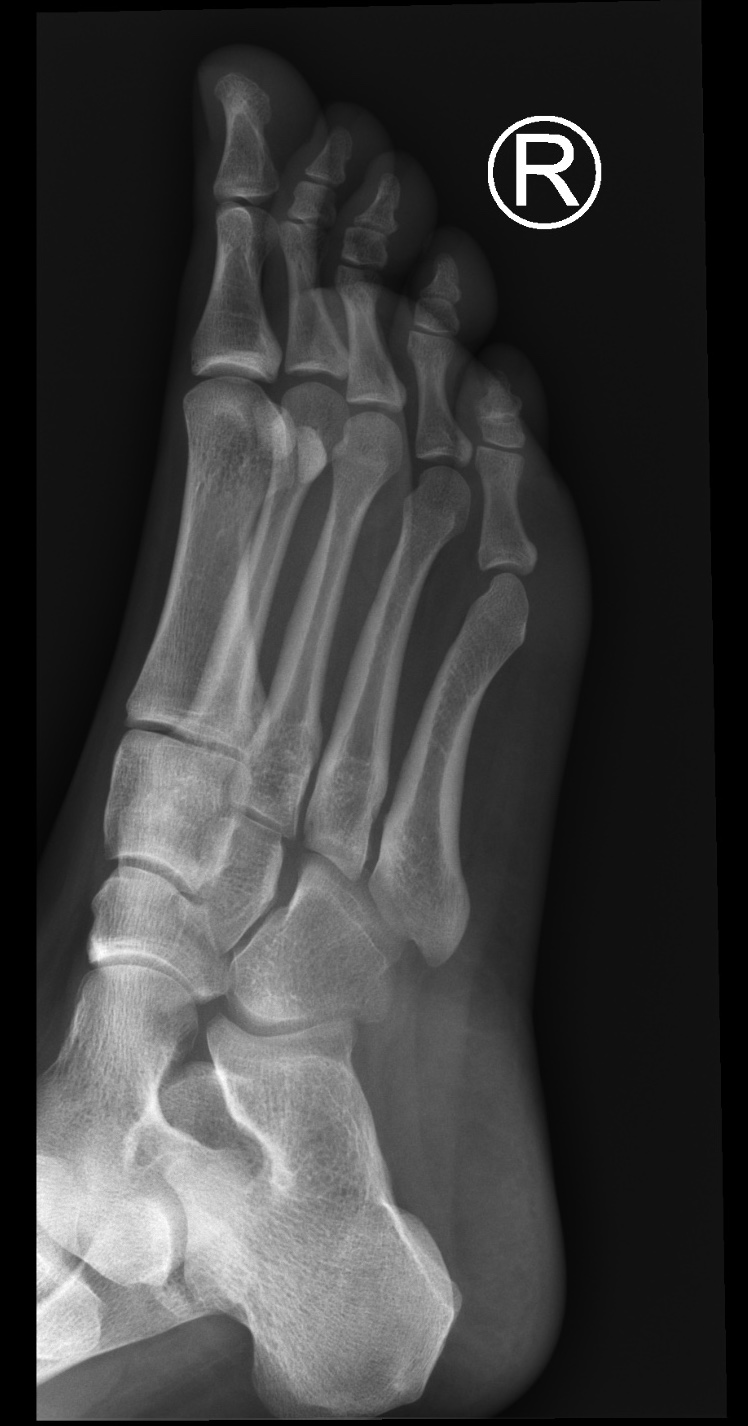
Normal foot xrays Image
Normal plantar fascia. A schematic representation (a) and lateral plain radiograph (b) show the normal PF (arrows). On sagittal ultrasound scan, the normal PF (arrows) appears as a fibrillar ligamentous structure (c). On MRI, the normal PF (arrows) is seen as a thin band of low signal intensity on both T1-weighted (d) and fluid-sensitive (e) images
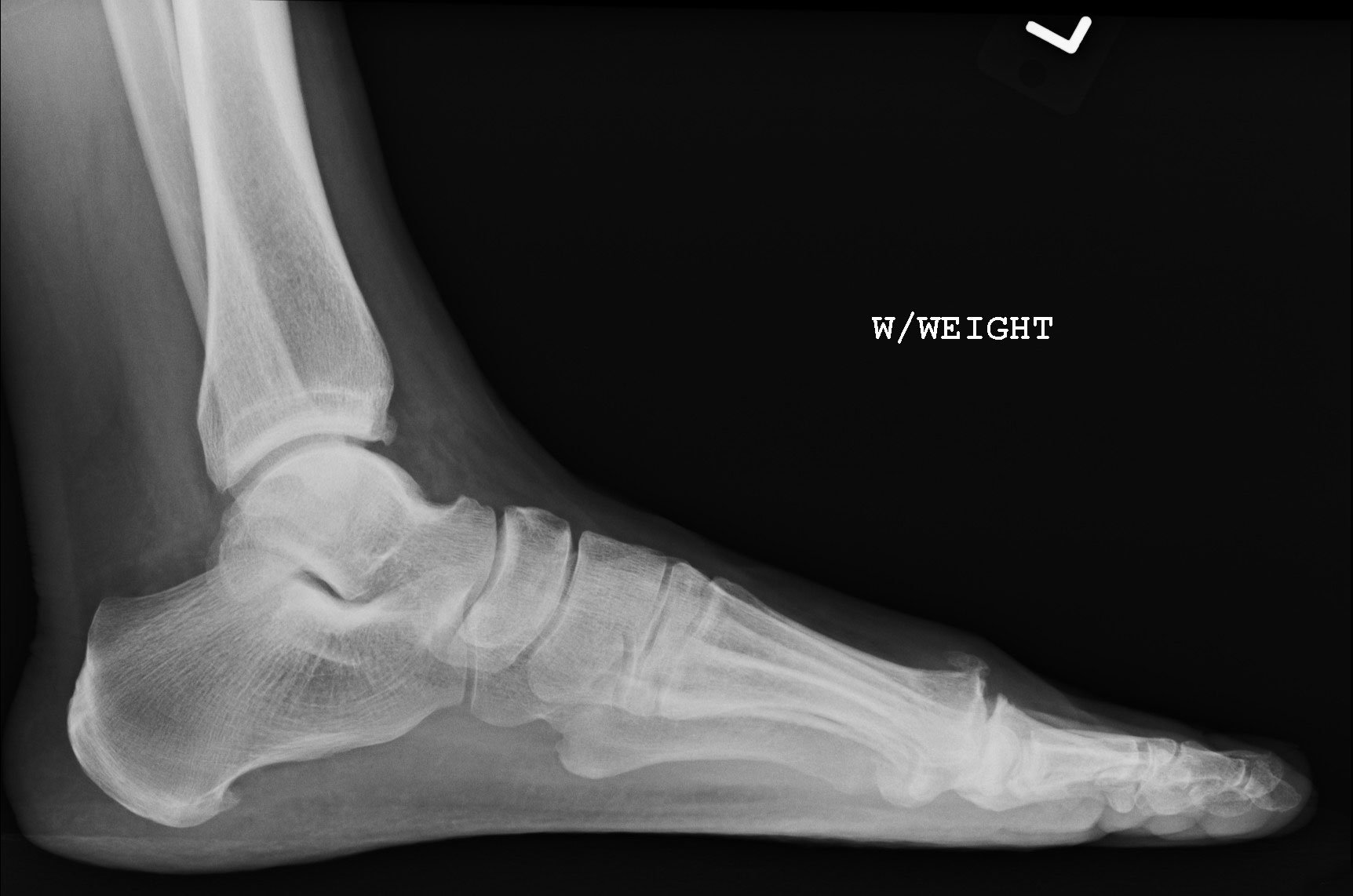
Figure 2
Routine Radiographs. These include a series of ankle and foot X-rays. Fig. 2.1 (A and B) (A) Anteroposterior (AP) and (B) Lateral (LAT) views of ankle. • Oblique (mortise) views: Mortise view is 15-degree internal rotation view, which clearly shows ankle mortise in its true plane.

Xray left foot Fig. 4 Xray left foot Download Scientific Diagram
is it an ossicle, an avulsion or bone fragment? do not call normal variant anatomy a fracture! do not call an unfused base of 5 th apophysis a fracture! Alignment Lisfranc complex The Lisfranc joint is hugely important for stability. Injury to it may be subtle and if missed, disastrous.

NORMAL FOOT 7
What is a Foot X-ray? A foot X-ray is a painless medical imaging technique that uses low levels of radiation to create detailed images of the bones and soft tissues in the feet. It's a non-invasive way to examine the internal structures of the feet, making it an essential tool for diagnosing various foot conditions.

EMRad Radiologic Approach to the Traumatic Ankle MEDTAC International Corp.
No fracture is seen. Bones show normal alignment and architecture. Joint spaces and articular margins are intact. Soft tissues show normal appearance. FREE download PDF Word format X rays Left Foot AP/OBL . Also available other updated Radiology MRI, CT Scan, Xray, Sonography, USG, Mammography, PET CT, EEG and ECG Report templates.

Image
Overview Along with questions of your medical history, your doctor may need to take x-rays of your foot to help aid in making a diagnosis to determine the cause of your foot pain. If the foot is broken it will be put into a cast. Toes that are broken are taped.
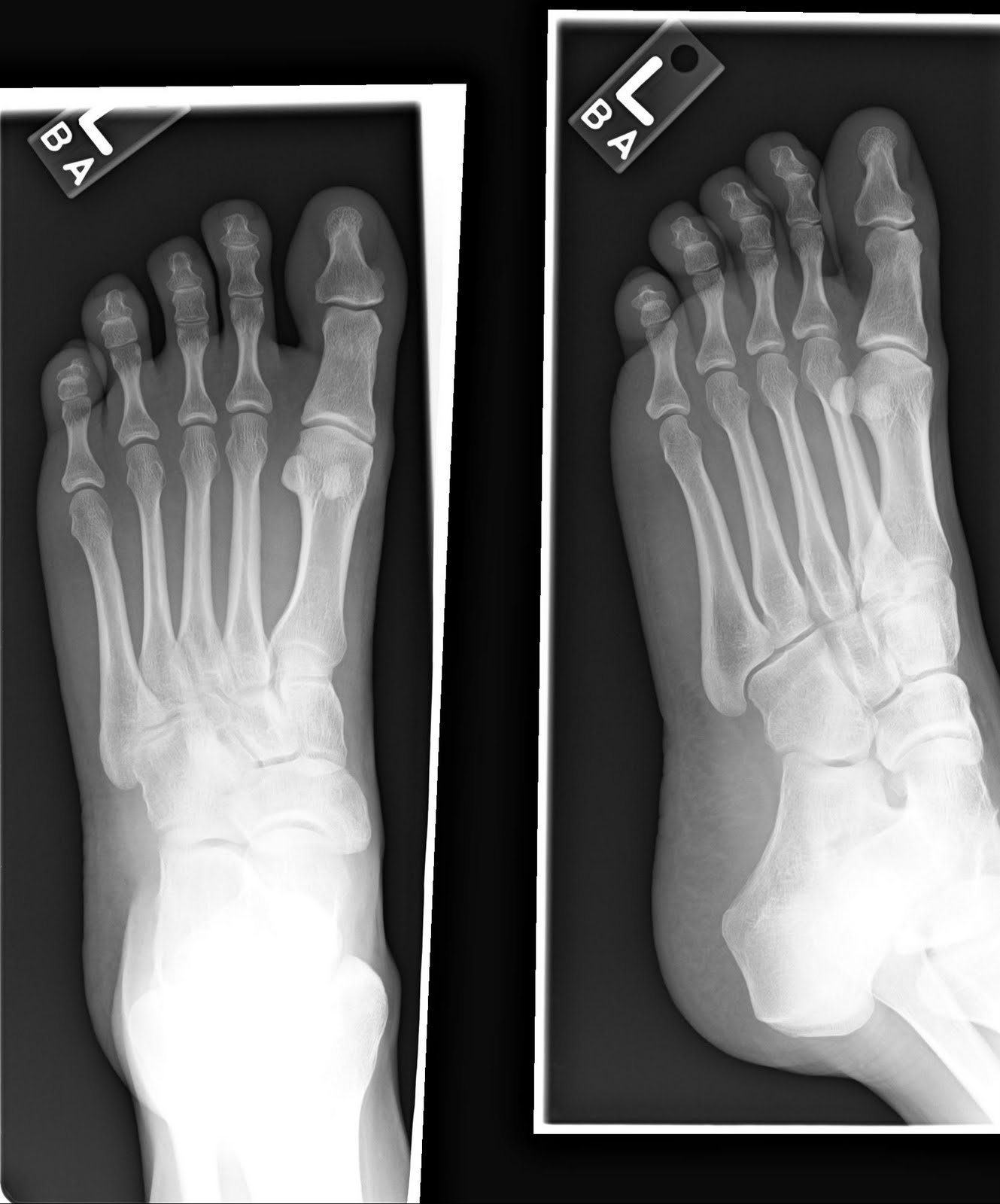
NORMAL FOOT 5
Case Discussion. Important areas to review include midfoot alignment, which is lost in Lisfranc injuries, the metatarsals and navicular for stress fractures, and for an erosive arthropathy, such as in gout . A structured approach and checklists can be helpful when preparing for exams.

footxray Family Foot and Ankle
A normal left foot X-ray should show clear and well-defined structures without any signs of fractures, dislocations, or abnormalities. Understanding the anatomy and function of a normal left foot can help healthcare professionals diagnose and treat various foot conditions effectively. If you have any concerns about your left foot, it is.